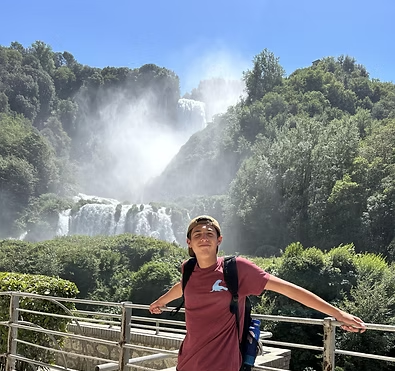What's Buzzing in Your Backyard?
- Sydney Hanson
- Jun 30, 2022
- 2 min read
Last week was national pollinator week, so it is a perfect time to go through a brief survey of what kind of native pollinators you may see flying around this summer in western Pennsylvania!
Lets start with the more beautiful members of the pollinators, the butterflies! From tiger swallowtails,

to monarchs, to the red-spotted purple butterfly, there are a million different colors and kinds fluttering about through the
summer months. Butterflies add a beautiful brightness to any garden or backyard, and they do a wonderful job of pollinating many different flowers. Additionally, as larvae or a

caterpillar they offer growth control for the plants they take residence on by
eating leaves, not to mention that some caterpillars may eat pests like aphids offering yet another service to the ecosystem around them!
A larger part of the list of pollinators would be the bees. Many are considered endangered, threatened, or declining and they are more difficult pollinators to keep tabs on to get a good idea of population health. The common eastern bumble bee, the eastern carpenter bee, the brown belted bumble bee, the pure green-sweat bee, or the horn-faced mason bee are just a few of the different kinds of native bees that exist in Pennsylvania. Keep in mind when looking for native bees

in your yard that not every bee looks like a honey bee or a bumble bee. Sweat bees, for example, often look more like flies than bees. Mason bees are also not as brightly colored as a honey bee so they may be mistaken for a fly as they buzz past. Take some time the next time you sit outside with a list of native bees like this one to see how many native bees you have buzzing about, it may surprise you how many of your garden visitors are bees. If you feel particularly drawn to them, maybe you could research what kind of habitat they need and make your house a safe haven for them!

Less commonly thought of in the mission of pollination are beetles and ants, much like bees and butterflies the ants and beetles crawl into flowers to eat the sweet nectar that is there to tempt them into the flowers where they will pick up the

plant’s pollen. Then these little insects crawl from flower to flower carrying the pollen with them. Some birds and bats are also known to act as pollinators to certain plants!
Each of these critters acts in a specific niche in the ecological set up of your garden, and each works together to create a healthy ecosystem around them. For examples, bumble bees have a very specific way of pollinating plants which is incredibly effective for tomato plants, so if you’re growing a vegetable garden it may serve you well to set up a bumble bee friendly area in your yard. Butterflies can access nectar in flowers that have very deep and narrow flowers that insects with smaller mouth parts wouldn’t be able to access. Every individual involved in the environment is vitally important for the functionality of the whole system. If you’re interested in finding out more ways to support native pollinators around you, check out our other blog posts on pollinator friendly gardens, or the Pollinator Friendly Garden section of our Helpful Links page!




Comments